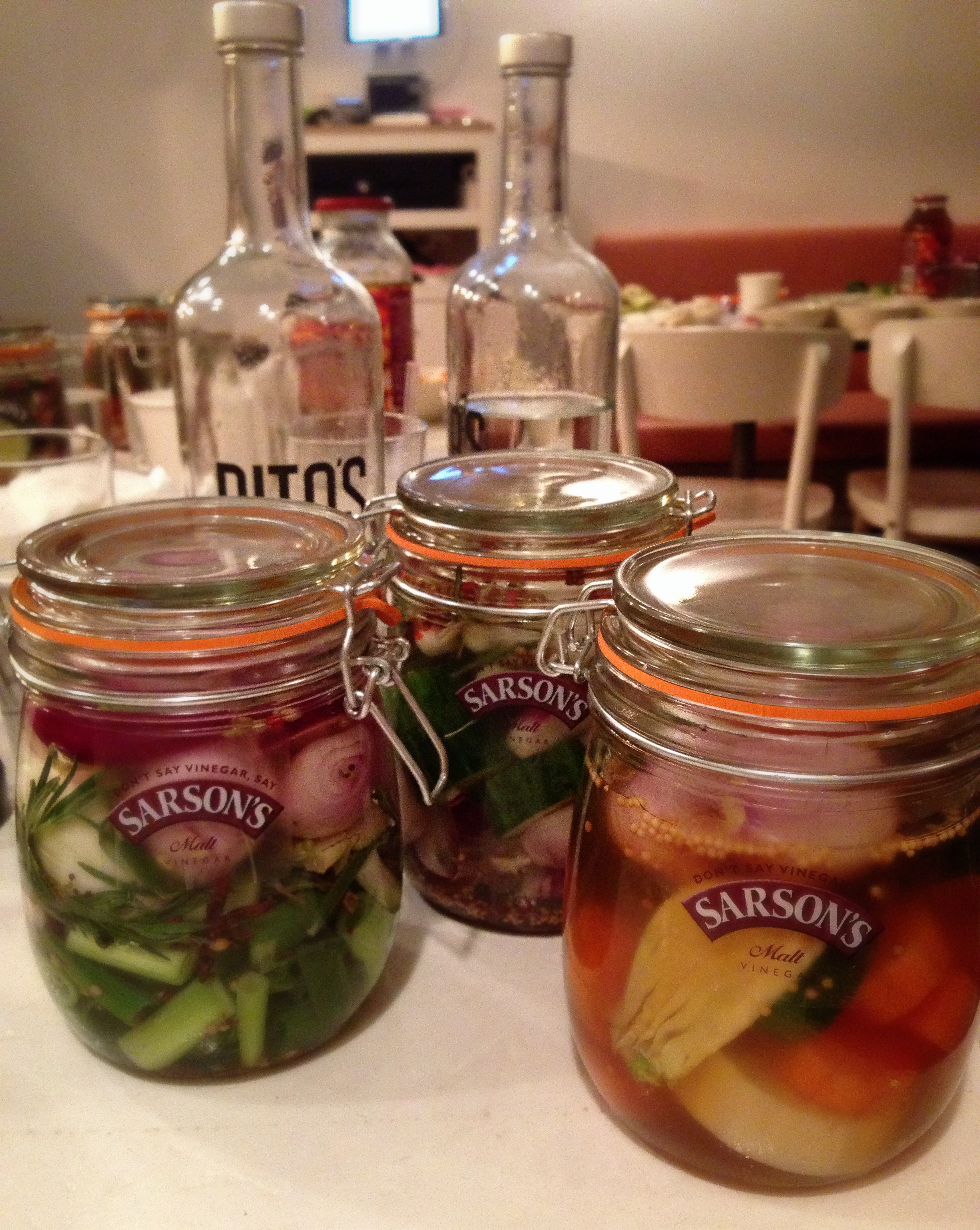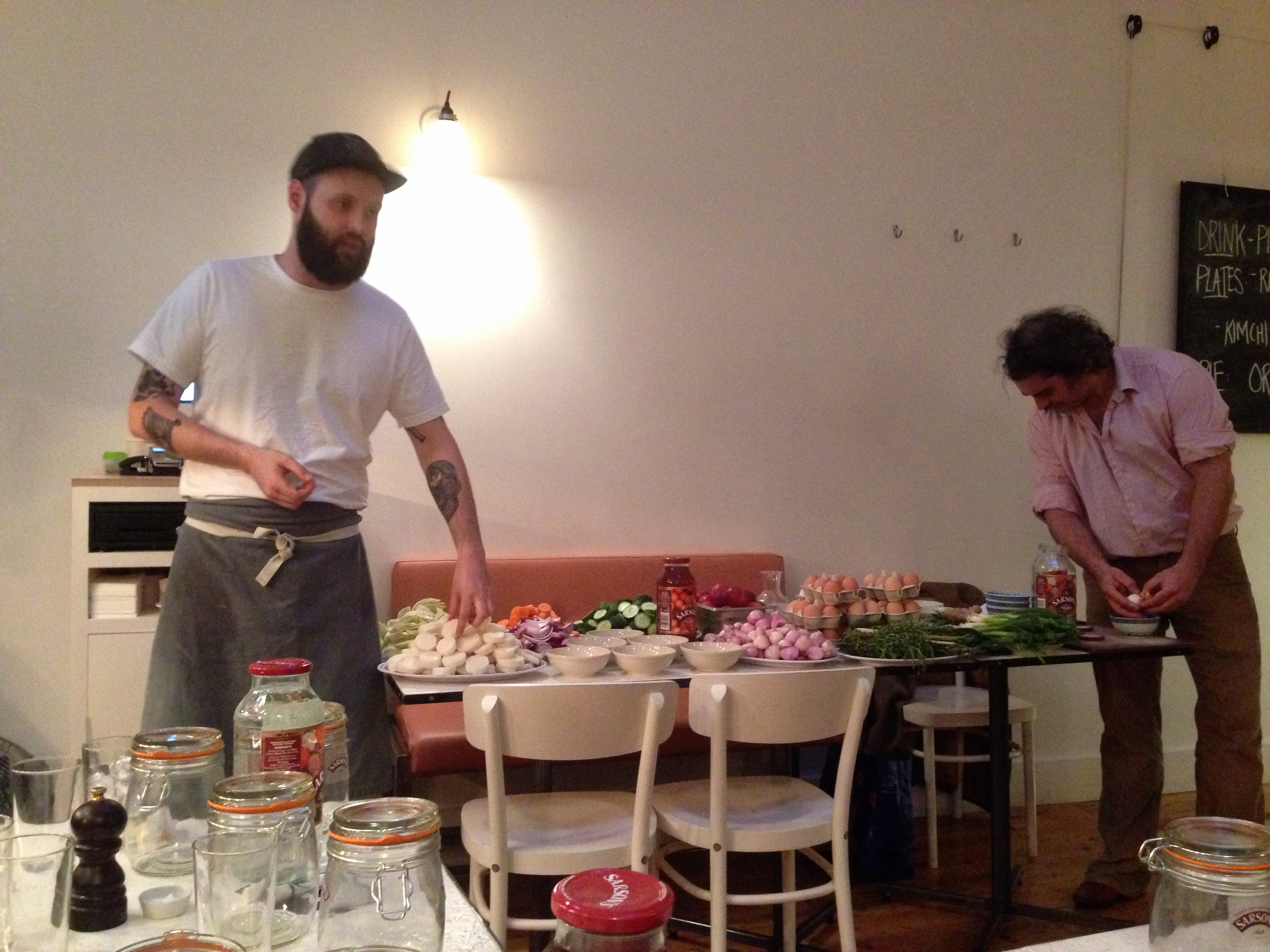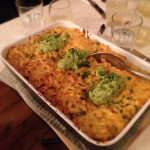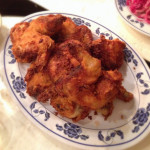WELL POP ME IN A JAR AND CALL ME A PICKLE | SARSON’S PICKLING MASTER CLASS WITH PETER GINN & GABRIEL PRYCE
To me, pickled foods used to represent that limp slither of gherkin in a Quarter Pounder, the sad onions on cocktail sticks left behind at kids parties, or the boiled egg being sucked on by an old toothless man in our local chippy.
How things have changed. One of the things I look forward to the most are the pickles served with my MEATliquor or Byron burger. The pickle-tastic meal served up at 1 Leicester Street was a highlight too. So when Sarson’s invited us along to their pickling master class at Rita’s, we couldn’t refuse – we can’t resist their fried chicken.
After a welcome cocktail and a couple of pimped up pickled eggs (sorry, still can’t get the image of Mr Toothless out of my head) we sat down to find out all we need to know about vinegar and pickling by Peter Ginn (food historian and BBC presenter) and Gabriel Pryce (head chef/executive director at Rita’s).
So why do we preserve our food? What’s the point of pickling and why use vinegar? Well briefly, and fairly obviously, it’s mainly due to the fact that before the fridge was perfected and became commonplace in our homes (in the 1950s), the abundance of foods harvested in Autumn had to last us through the winter months. Preservation methods include smoking, salting, potting and canning. But pickling is by far and the most common method and uses vinegar as the active preservation agent, as vinegar is one of the most effective form of preservation.
The use of vinegar is ancient (circa 3000bc to 2000bc) and homemade batches were common. Any alcoholic liquid with less than 18% abv will turn to vinegar when the sugars react with the air, traditionally dregs of wine, beer and cider were kept in order to make vinegar. But as the population grew (and moved from the country to cities) so did the need for commercial production.
This is where Sarson’s comes in. As this famous brand has just celebrated its 200th birthday, here are a couple of facts that Peter told us. The original location of the Sarson’s factory was near Tower Bridge and as you approached the bridge there was an overwhelming smell of vinegar. When Sarson’s moved up they dismantled the infrastructure of their factory including the wooden vinegar vats, when the Cutty Sark caught fire in 2007, Sarson’s donated these timbers which were used to restore the lifeboats. Before we were let loose and sent into a pickling frenzy with all the amazing ingredients laid before us we were given a few tips.
- Sterilize the bottle before use (wash out the bottles then bake in an oven at 180 degrees for 10-15 minutes)
- Use glass not metal (vinegar is corrosive. It doesn’t react with glass but it will with metal).
- Pickle little and often
- Keep a jar of Sarson’s pickling vinegar in your cupboard as a kitchen essential.
And then we were off, shelling boiled eggs, chopping spring onions (and other vegetables), shredding herbs and sprinkling seeds and spices. Once our Kilner jars were full to the brim it was time to add the Sarson’s pickling vinegar, seal the jar and leave for about six weeks to let the vinegar work its magic. We really can’t wait for the results, we are even thinking of having a pickle party at Christmas and serve our creations with some warm sourdough and some stinky cheeses. We might even crack open our homemade blackberry gin, oh how very ‘The Good Life‘ of us!
- Mac and cheese with green chilli and avocado
- Amazing fried chicken
- Rocky Road ice-cream sandwich
Talking of The Good Life, now it was time to tuck into Rita’s famous fried chicken, their amazing mac and cheese with green chilli and avocado running through it, and of course some pickled red cabbage…
As part of a new campaign focusing on families, Sarson’s vinegar has teamed up with the lovely Nick Coffer – TV and radio personality and family food author, to create a selection of fun and healthy recipes that are simple and enjoyable to cook with the kids. Find out more here










